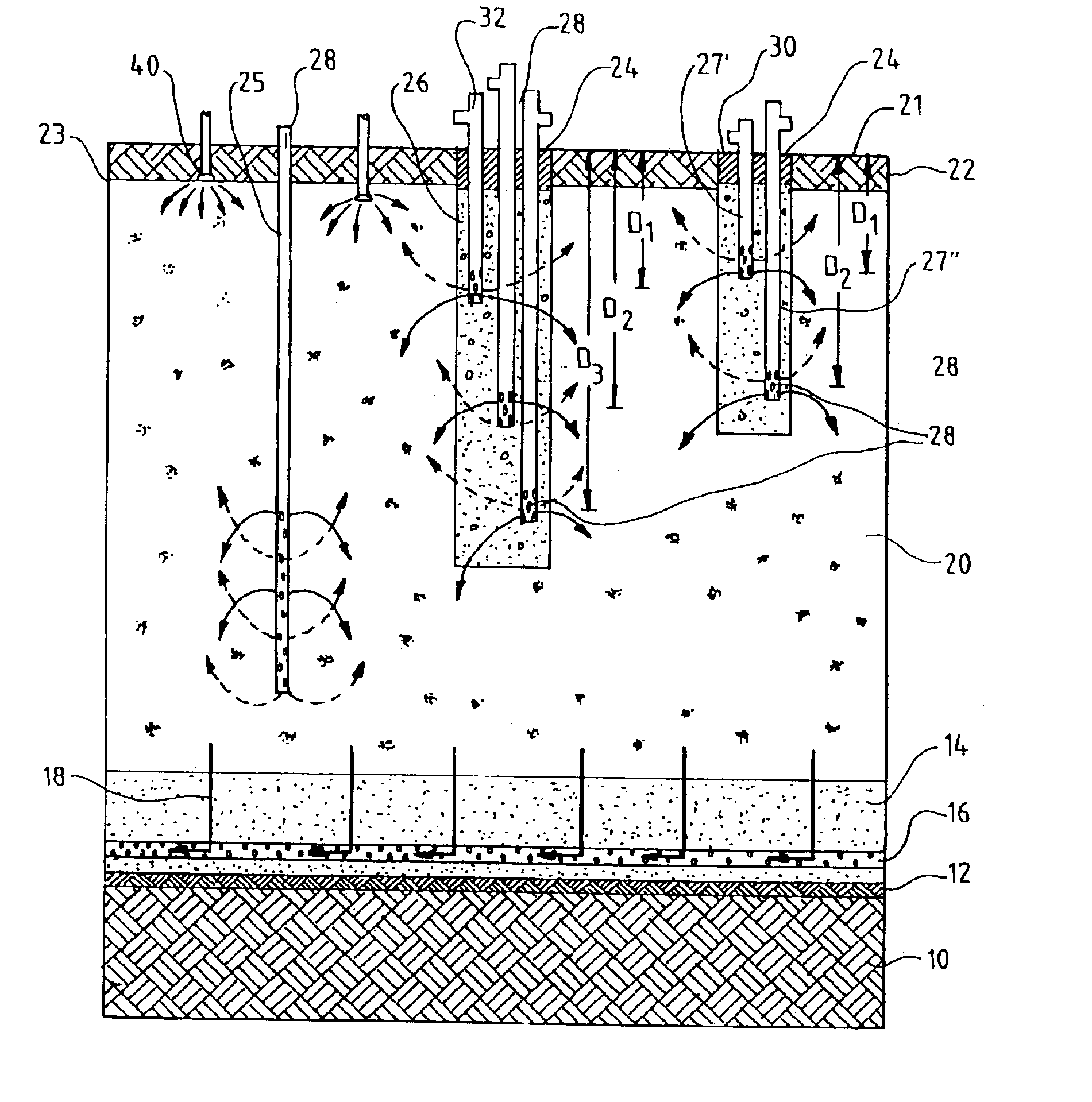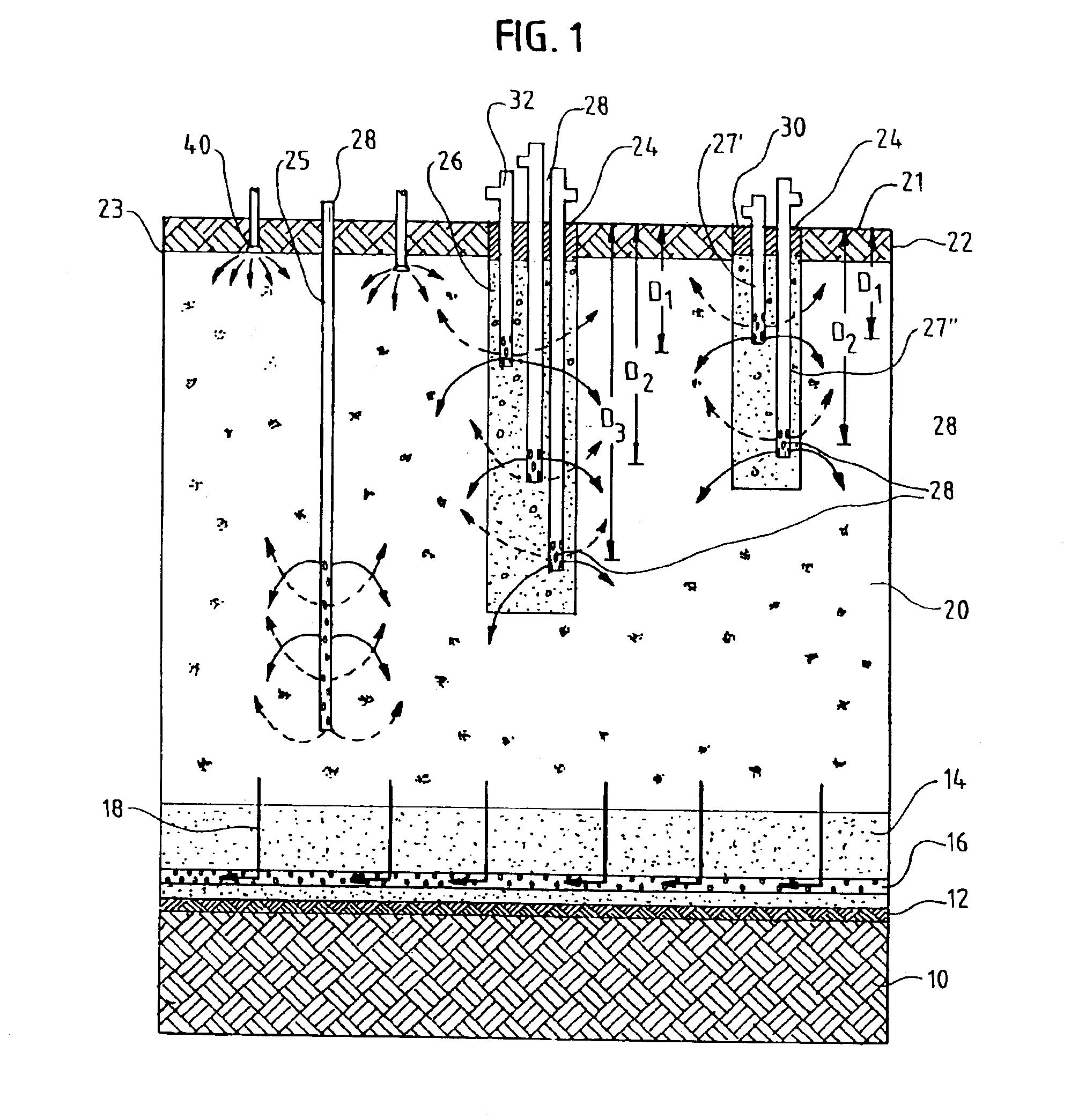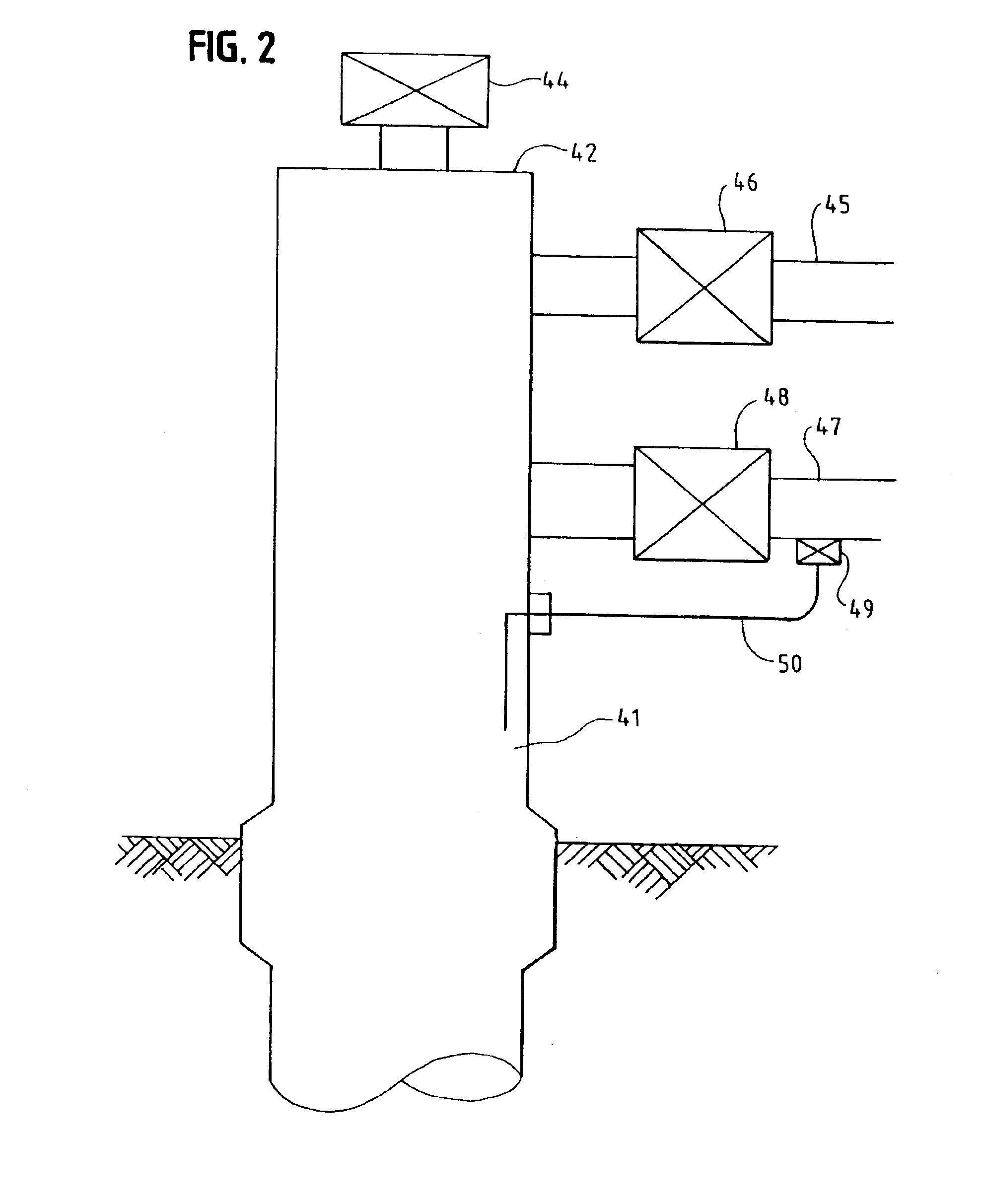Aerobic bioreduction of municipal solid waste landfill mass
a technology of solid waste landfill and bioreduction, applied in foundation engineering, contaminated soil reclamation, construction, etc., can solve the problems of high methane gas and malodorous trace gases, and achieve enhanced bioreduction of landfill mass, high quality, and high levels of methane gas
- Summary
- Abstract
- Description
- Claims
- Application Information
AI Technical Summary
Benefits of technology
Problems solved by technology
Method used
Image
Examples
example 1
[0058]Controlled aerobic landfill decomposition was demonstrated using a landfill test cell at the Live Oak Landfill in Georgia. Municipal solid waste was accepted for disposal in the demonstration cell following the standard operating procedure for the landfill. The waste was arranged in lifts and the individual lift covers were removed daily prior to adding trash (typical operation for this landfill), resulting in a compacted trash cell with no intervening layers of cover. Upon completion of the test cell, a soil cap, 1- to 1.5 feet deep, was installed.
[0059]The completed demonstration cell was surveyed, a topographic map was produced and grid points for injection wells were established. Initially, the wells were segregated and placed at grid points in relation to air or leachate injection. Eighteen individual air injection wells were installed at depths ranging from 15 feet to 20 feet. Twenty-seven leachate-injection wells, with depths ranging from 5 feet to 15 feet, were install...
PUM
 Login to View More
Login to View More Abstract
Description
Claims
Application Information
 Login to View More
Login to View More - R&D Engineer
- R&D Manager
- IP Professional
- Industry Leading Data Capabilities
- Powerful AI technology
- Patent DNA Extraction
Browse by: Latest US Patents, China's latest patents, Technical Efficacy Thesaurus, Application Domain, Technology Topic, Popular Technical Reports.
© 2024 PatSnap. All rights reserved.Legal|Privacy policy|Modern Slavery Act Transparency Statement|Sitemap|About US| Contact US: help@patsnap.com










